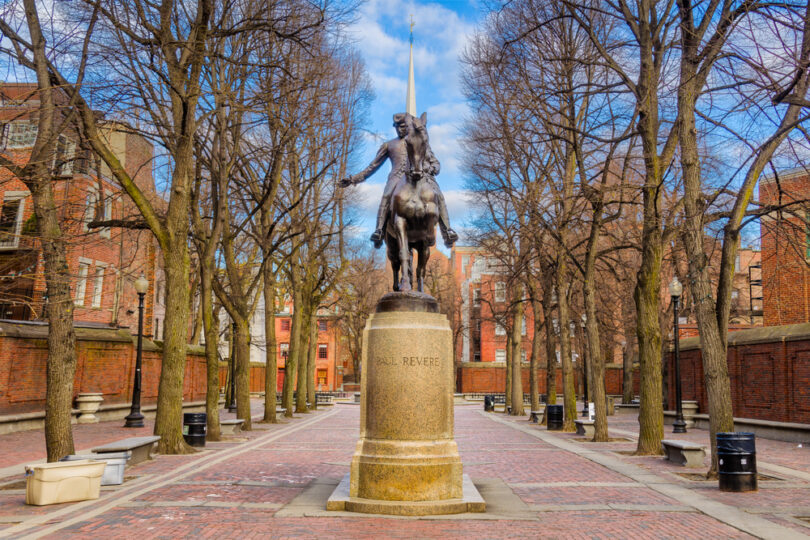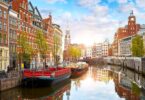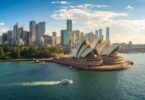Boston is a city steeped in history, renowned for its colonial landmarks, rich academic presence, and classic New England charm. Its blend of old-world architecture and modern culture draws visitors from all over. Whether you’re interested in walking historic trails, exploring world-class museums, or indulging in fresh seafood, here’s what you need to know to make the most of your Boston visit.
What’s the Best Time to Visit Boston?
The best time to visit Boston is from late spring to early fall, particularly May through October. During these months, the weather is mild to warm, making it perfect for outdoor activities like exploring Boston Common, walking the Freedom Trail, or enjoying a Red Sox game at Fenway Park. Fall is also a fantastic time to experience the region’s famous foliage. However, if you prefer smaller crowds and cheaper rates, early spring and late fall can be good options.
What’s the Cheapest Month to Fly to Boston?
January and February are typically the cheapest months to fly to Boston. Winter tends to bring lower travel demand, making flights more affordable. However, be aware that the weather can be cold and snowy during these months, so it’s important to pack accordingly.
How Far in Advance Should I Book a Flight to Boston?
For the best flight deals to Boston, it’s a good idea to book your trip about two to three months in advance. Prices often fluctuate depending on the season, so if you’re planning to visit during the peak summer or fall seasons, booking even earlier can help secure better fares.
How Many Days in Boston Is Enough?
Three to four days in Boston is usually enough to see the city’s major attractions. This timeframe allows you to visit key sites such as the Freedom Trail, the Boston Tea Party Ships & Museum, and the Museum of Fine Arts. You can also take a day trip to nearby spots like Harvard University in Cambridge or the beaches of Cape Cod.
How Can I Save Money on a Trip to Boston?
To save money on your Boston trip, consider visiting during the off-season (late fall or winter), booking flights and accommodations well in advance, and using public transportation instead of renting a car. Many of Boston’s most iconic attractions, like the Freedom Trail and Harvard University, are free to explore, and there are plenty of affordable dining options in neighborhoods like Chinatown and the North End. You can also look for free events, such as concerts or outdoor markets.
What Are the Cheapest Places to Fly into in Boston?
Boston Logan International Airport (BOS) is the primary airport serving the city and generally offers the most competitive fares. Since Logan is a major hub, it often has more options for affordable flights compared to smaller regional airports. While there aren’t any secondary airports in the immediate Boston area, travelers may also consider flying into Providence (PVD) or Manchester-Boston Regional Airport (MHT) for potential savings, though both require a longer commute to the city.
You Might Also Enjoy: New York City Travel Brief: What to Know Before You Go
Additional FAQs:
Q: What are the must-see attractions and activities in Boston?
A: Boston is rich with history and culture, offering a variety of must-see attractions. Key spots include walking the Freedom Trail, visiting the Boston Tea Party Ships & Museum, and exploring the Museum of Fine Arts and the Isabella Stewart Gardner Museum. A stop at Fenway Park is a must for sports fans, and Boston Common and the Public Garden offer scenic outdoor spaces. For something a little different, you can also check out the New England Aquarium and take a harbor cruise.
Q: What are the best neighborhoods to stay in in Boston?
A: The Back Bay is a popular choice for its central location, historic architecture, and proximity to shopping on Newbury Street. Beacon Hill offers charming, historic streets and easy access to Boston Common. The Seaport District is a newer, trendy area with waterfront views and great dining options. For those looking for a quieter atmosphere, Cambridge (just across the river) is home to Harvard and MIT and has a lively cultural scene.
Q: What are the local transportation options in Boston?
A: Boston has a well-developed public transportation system, including the MBTA subway, known as the “T,” which is the most convenient way to get around the city. Buses and commuter rail lines also connect different parts of the greater Boston area. Walking is another great option, as many attractions are close together. For quick trips, ride-sharing services and taxis are widely available, and biking is becoming more popular with bike-sharing options like Bluebikes.
Q: What are the best day trips from Boston?
A: Popular day trips from Boston include a visit to Cape Cod for beaches and charming small towns, or a trip to Salem to explore its maritime history and infamous witch trials. Plymouth, home to Plymouth Rock and Plimoth Patuxet Museums, is also a great option for history buffs. Alternatively, you can explore the North Shore, including towns like Gloucester and Rockport, known for their art galleries, seafood, and coastal views.
Q: What are the best seasonal events or festivals in Boston?
A: Boston hosts a range of seasonal events and festivals throughout the year. In spring, the Boston Marathon is a huge event, attracting runners and spectators from around the world. Summer brings outdoor concerts, including the Boston Pops Fireworks Spectacular on the 4th of July. Fall is all about enjoying the foliage and celebrating Halloween, especially in nearby Salem. In winter, you can enjoy First Night Boston on New Year’s Eve, which features music, ice sculptures, and fireworks.
Q: What are the best historical landmarks to visit in Boston?
A: Boston is known for its deep historical roots, with many landmarks to explore. The Freedom Trail is a 2.5-mile walk that takes you to several key sites, including the Massachusetts State House, Paul Revere’s House, and the Old North Church. The Boston Tea Party Ships & Museum offers an interactive experience about the events leading to the American Revolution. Other notable sites include the Bunker Hill Monument and the USS Constitution.
Q: Where can I find the best seafood in Boston?
A: Boston is famous for its seafood, and some of the best places to enjoy it include Neptune Oyster in the North End, where you can try lobster rolls and oysters. Union Oyster House, one of the oldest restaurants in America, offers classic seafood dishes in a historic setting. Legal Sea Foods is another popular option with multiple locations across the city. For something more casual, head to Yankee Lobster Company in the Seaport District.
Did we leave out your favorite part of Boston? Tell us about it in the comments below!












